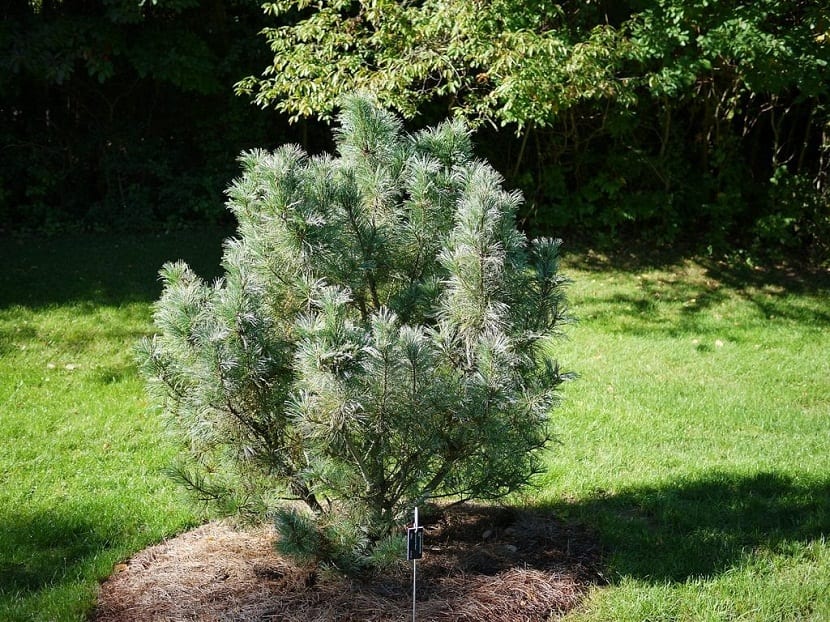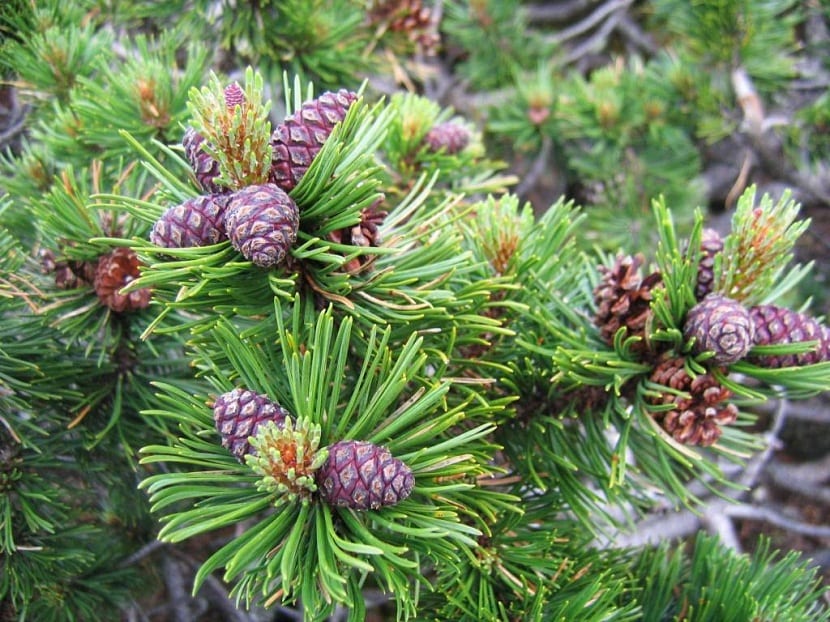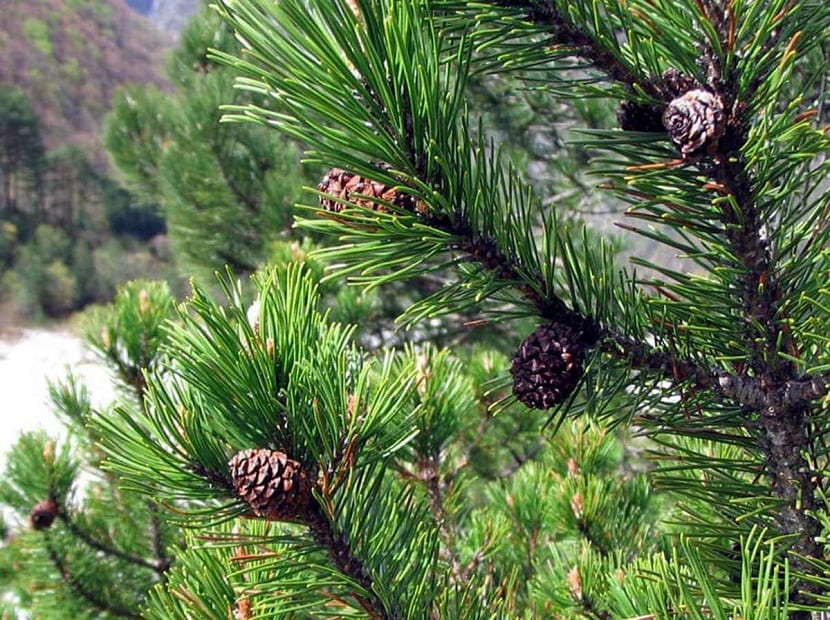
El Pinus mugo is an evergreen conifer belonging to the Pinaceae family, also called dwarf pine. It is known for the preparation of a liquor and an oil extracted from its branches. It is a species that is not easy to recognize, since its ability to adapt to various conditions, both favorable and unfavorable, allows it to change from a tree to a voluminous shrub, from a practically creeping plant to a perennial.
Habitat

This bush grows wild in mountainous areas and it is particularly widespread in Central Europe, being able to see it in the alpine regions, at altitudes of 1500 meters above sea level. However, there are a large number of varieties that are very well suited to lower altitudes, which can also be transplanted into home gardens.
Characteristics of the Pinus mugo
El Pinus mugo in its tree form it can exceed 15 meters in height, has a greyish-looking bark and a dense oval crown and has needle-like leaves with narrow edgesrigid, green in color, gently curved and approximately 4 centimeters long.
Its flowering usually occurs during the period from May to July, its male microsporophylls form groups at the base of the yellow shoots as a result of the pollen content. Female microsporophylls are less visible and they have a color that ranges from red to purple.
The maturation period of the cones is two years and they are kept on the branches for at least one more year before falling to the ground, being dark gray and oval in appearance, with the tip surrounded by a kind of darker ring. During the time they remain on the branches, their position undergoes changes, since at first it has a straight shape, it becomes horizontal and even pendular. They contain countless seeds that disperse in late fall.
Cultivation and care
It is important that you bear in mind that if you decide to buy a dwarf pine you must transplant it quickly, since this type of shrub suffers greatly in pots. This species of pine needs a rocky soil located in a sunny area and constant watering. It is a fairly resistant species, which means that it does not need special care, but it does need to be placed in a spacious place because it tends to spread both across and below the ground.
Can resist various types of soils, even the arid and rocky ones, but it cannot survive if it does not have enough water. However, you should pay attention to the soil where you plant it, because it can run the risk of being deficient due to a lack of the necessary nutrients.
You should sow in late winter or early spring. You can also transplant during the coldest period of fall. Once you have opened the hole where you are going to transplant it, you must place the bush preserving the natural inclination of the roots, to prevent them from being damaged during the positioning process. Once the hole is planted and covered, it is important that you cover around the trunk with a mulch prepared with pine thorns and bark.
This genus is also propagated by seed, either after harvesting in autumn or late winter and in individual containers. If the seeds have been in storage, you should subject them to a stratification process at 4 ° C for approximately 6 weeks. During the first two winters of the plant you must guarantee some protection.
Uses

The wood of the Pinus mugo It has a wide variety of uses, however it can be said that the most important is its use in carpentry to make coatings and furniture for interiors. Its wood is easy to work because of its low hardness.
Diseases and pests
In addition to not surviving if it does not have the necessary water, as with other conifers, the dwarf pine is prone to pest and fungal attacks, being one of its most aggressive enemies is the mealybug. When the needles start to turn yellow, it is a sign that the plant has been attacked by pests.